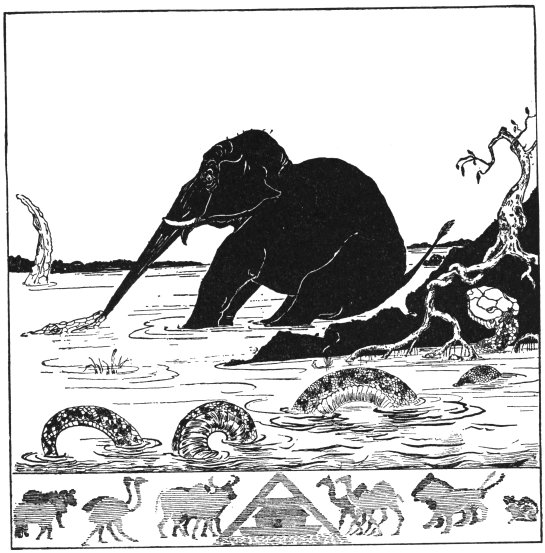
I have to admit that I haven’t read anything, ever, by Tom Wolfe, whose new book The Kingdom of Speech (2016) apparently tries, in the words of the headline to Jerry Coyne’s review for the Washington Post, “to take down Charles Darwin and Noam Chomsky.” And, after reading a few critical reviews of The Kingdom of Speech, I’m not feeling inclined to start reading his work; it hardly sounds like the right stuff. But a passage quoted from the book by a reviewer caught my attention:
Kipling’s intention from the outset was to entertain children. Darwin’s intention, on the other hand, was dead serious and absolutely sincere in the name of science and his cosmogony. Neither had any evidence to back up his tale. Kipling, of course, never pretended to. But Darwin did. The first person to refer to Darwin’s tales as Just So Stories was a Harvard paleontologist and evolutionist, Stephen Jay Gould, in 1978. Orthodox neo-Darwinists never forgave him. Gould was not a heretic and not even an apostate. He was a simple profane sinner. He had called attention to the fact that Darwin’s Just So Stories required a feat of fiction writing Kipling couldn’t compete with.
The allusion to Kipling is, of course, to his collection Just-So Stories (1902), which began as bedtime stories told to his first-born child Josephine (who died at the early age of six). As the Kipling expert Daniel Karlin explains, “These are stories of origins: ‘How the Whale got his Throat’, ‘How the Camel got his Hump’, ‘How the Rhinoceros got his Skin’—stories that answer the kinds of question children ask, in ways that satisfy their taste for primitive and poetic justice.”
Well, was Gould “[t]he first person to refer to Darwin’s tales as Just So Stories,” as Wolfe asserts? It’s true that, as part of his campaign against “panadaptationism,” Gould famously referred to adaptive hypotheses advanced in the absence of evidence as “just-so stories”; the first appearance of the epithet in his oeuvre seems to be in one of his Natural History essays, “The Return of Hopeful Monsters” (1977), which refers disapprovingly to the “‘just-so story’ tradition of evolutionary natural history.” But Gould seems to have used the epithet with reference to Darwin himself only once, in a footnote to a later Natural History essay, “The Tallest Tale” (1996), and in the text of the essay he affirms, “Darwin did not much favor the fatuous ‘just-so story’ mode for illustrating natural selection by plausible speculation alone.”
Gould’s use of the phrase “just-so story” was famous, or notorious, enough that Anthony Gottlieb, writing in The New Yorker in 2012, managed to get the speculation “his may well have been the first pejorative use of Kipling’s term” past the magazine’s legendary fact-checkers. That, at any rate, is wrong. A feature of Kipling’s Just-So Stories is that distinctive features of animals are typically explained with reference to a particular event in the life of a single individual: elephants in general have trunks because the “mere-smear nose” of the Elephant’s Child was pulled out of shape by a tug-of-war between the Bi-Coloured-Python-Rock-Snake and the Crocodile (seeking to devour the Elephant’s Child). The original Just-So Stories thus presuppose the inheritance of acquired characters—sometimes called Lamarckism.
Accordingly, it wasn’t long after the publication of Just-So Stories that the epithet “just-so story” was used pejoratively—not against Darwin but against Lamarck. In 1918, the popular science writer Lancelot Hogben wrote, in a book on Alfred Russel Wallace, “Lamarck’s idea of evolution in his ‘Philosophie Zoologique’ is not essentially unlike the story of the recalcitrant Elephant’s Child in Rudyard Kipling’s ‘Just So Stories’. … Needless to say Lamarck and his fellows had no evidence to adduce in favour of their belief in the inheritance of acquired characters.” (It is common, but not really fair, to criticize Lamarck in particular, since, as Conway Zirkle noted in 1935, “Lamarck was neither the first nor the most distinguished biologist who taught that such modifications [acquired characters] were heritable.”)
But the epithet spread. Writing on “Homo sapiens—Whence and Whither” in Science in 1935, the physical anthropologist Earnest A. Hooton complained about a proposed revision to the understanding of the human lineage, on which the lemur—“the glassy-eyed, frozen-faced lemur, which suggests the product of some unhallowed alliance between a degenerate fox and a libertine marmoset”—would be downgraded from ancestor to cousin, with the spectral tarsier (Tarsius spectrum) “knocking for admission to the genealogical order of Daughters of the Human Evolution” in its stead. “Particularly because Tarsius sits erect, feeds itself with its hands, has a short snout, frontally directed eyes[,] and a brain in some respects well-developed, ingenious anatomists have made it the hero of a sort of scientific Just So story of primate evolution.”
Hooton evidently was afforded a high degree of literary license by the then editor of Science. But anyone not so devoted to flamboyant rhetoric ought to consider whether to emulate him in applying the epithet “just-so story” to a hypothesis regarded as lacking in evidence. It is, arguably, disrespectful. After all, Kipling’s stories are flights of fancy, not the products of serious inquirers seeking to provide plausible scientific explanations. If what’s really wrong with a scientific hypothesis is that it was advanced in the absence of compelling—or any—evidence, why not rest content with saying so, rather than implicitly chide its proponents for writing fiction? Of course, when writers of fiction themselves misunderstand and misrepresent the science, rhetoric may be the only thing keeping the Wolfe from the door.

